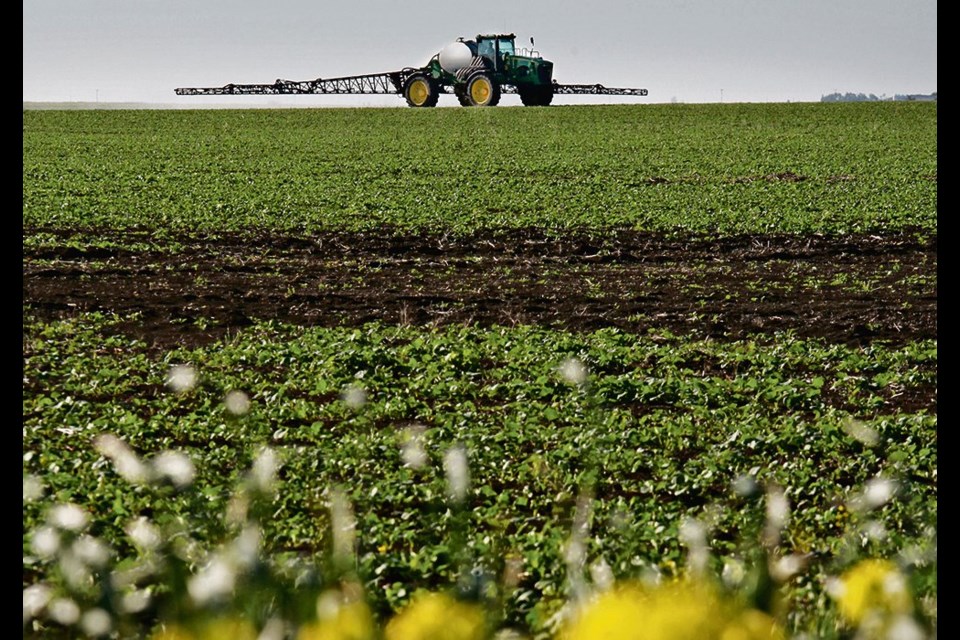WESTERN PRODUCER — Controlling weeds in prairie fields is about to get a whole lot more complicated, according to a weed management specialist with Manitoba Agriculture.
In a recent presentation, Kim Brown-Livingston suggested the days of depending solely on chemical herbicides to control weeds is nearing an end.
“We’ve had it fairly easy in the last little while,” Brown-Livingston said.
“We’ve had some really great herbicides; they’ve worked really well … and our mode of action (as farmers) is to pull into a field with a sprayer and start spraying.”
“We do a really good job of taking care of the weeds but we’ve got a herbicide resistance problem on the way, and it’s not a matter of if, but when it’s coming,” she continued.
“We’re not going to be able to use a lot of the herbicides that we’re using right now and … there might not be (a silver bullet coming) … so we really need to look at going back to the basics.”
Brown-Livingston said farmers can get a head start by using integrated weed management strategies that encompass a variety of elements.
Disciplined crop rotations, herbicide rotations and tank mixes that include multiple weed-control products will become more common.
Another useful tactic is targeting optimal plant densities and ensuring that crops get off to a competitive start.
“The biggest thing is to grow really good, competitive crops,” Brown-Livingston said.
“Ultimately, our goal should be to reduce the amount of weeds that see an in-crop spray, so the less weeds we’re spraying, the less weeds that get that herbicide and that lessens our chance for resistance to develop.”
The number of weed species that has developed herbicide resistance continues to expand.
According to the Manitoba Pulse and Soybean Growers (MPSG), at least 14 weed species in Manitoba alone are known to have herbicide resistance, including green foxtail, kochia, wild oats, wild mustard, hemp nettle, redroot pigweed, stinkweed, false cleavers, chickweed and shepherd’s purse.
Kochia, wild oats and redroot pigweed are of particular concern, the MPSG said in a recent document.
Wild oats have shown resistance to six different modes of action in Manitoba, making the province a global leader in wild oat herbicide resistance, NPSG said.
“Group 1 resistance was first confirmed in the early 1990s and levels have continually increased,” it added.
Glyphosate-resistant wild oats have already been identified in Australia and weed experts say they will soon be present in Western Canada.
According to Brown-Livingston, Manitoba Agriculture will resume its provincial weed survey this summer. The survey did not take place in 2021 due to concerns over COVID-19.
The survey, which will examine weeds in about 700 fields, is an important tool for monitoring herbicide resistant species.
Survey organizers are particularly concerned with the proliferation of glyphosate-resistant populations of waterhemp, Palmer amaranth and smooth pigweed. Cases of glyphosate-resistant smooth pigweed have been recorded in other provinces, but so far, not in Manitoba.
“It can be an aggressive weed… so it’s definitely one that we have to be watching.”
In the case of waterhemp and Palmer amaranth, weed growth occurs very quickly with seedlings advancing to heights of nearly 12 inches within 16 days of emergence.
That’s made it more important to ensure the effectiveness of pre-seeding weed control and that seeding practices are conducive to rapid canola seedling emergence.
Ensuring that resistant weeds do not set seed is critically important. To that end, canola growers are encouraged to use seed row spacing and seeding rates that minimize weed competitiveness.
Rob Gulden, a professor and weed ecology expert at the University of Manitoba, said canola growers who achieve plant densities of 50 to 60 plants per sq. metre will optimize yield and minimize weed competition.
Although wide row spacings in canola are capable of producing good canola yields, they are also subject to increased weed competition due to early-season gaps in the crop canopy.
“Canola is an incredibly plastic plant. It can deal with a whole plethora of row spacings and densities and still produce very… (good) yields,” he said.
“What we’ve noticed is that narrow row spacings, all the way up to about 22 inches, give or take, have the same yield response curve.”
“So, canola plants are able to use that space (between seed rows), although from a weed management perspective, going with extra wide row spacings might not always be the right choice.”
Livingston-Brown said effective pre-emergent controls can eliminate future herbicide resistance headaches that have costly and lasting impacts.
Seeding rates and variety selection can also be useful in reducing weed competition.
In some crops, research has shown that increasing seeding rates and the using taller plant varieties can reduce weed biomass by 70 percent.
Livingston-Brown recommended that growers read a document entitled Top 10 Herbicide Resistant Weed Management Practices, prepared by research scientists and herbicide resistance experts Neil Harker and Hugh Beckie.

